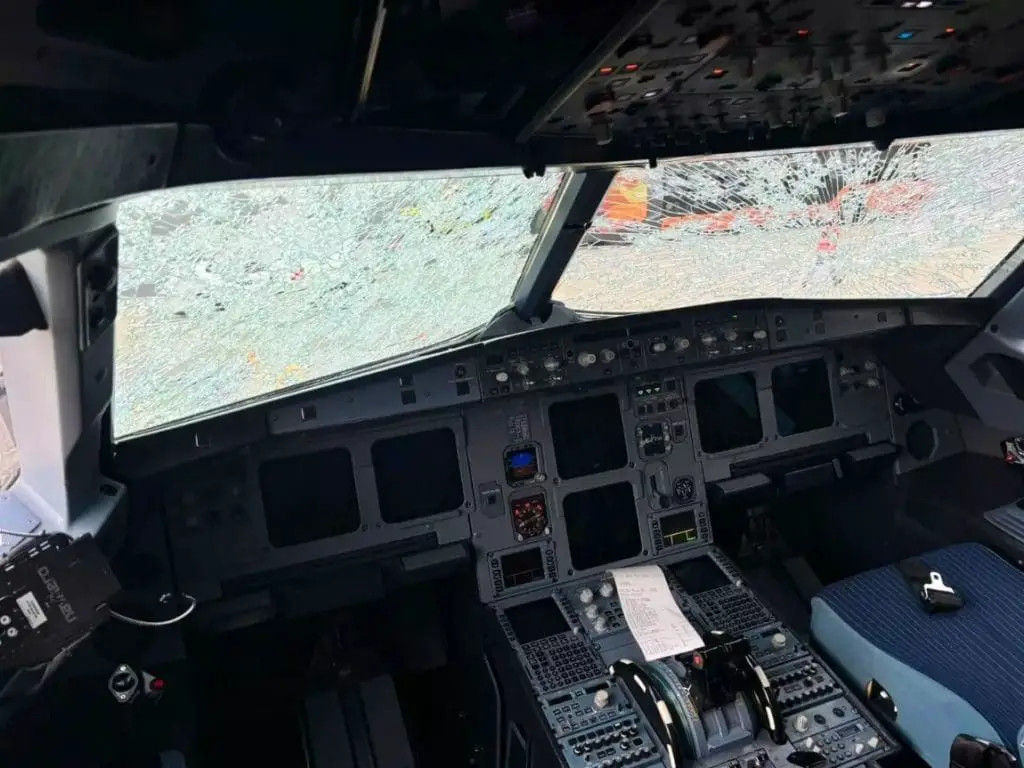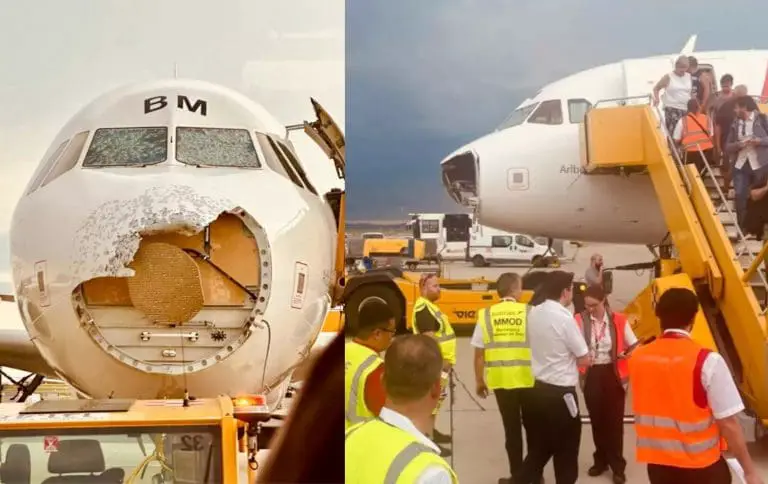Passengers aboard an Austrian Airlines flight from Frankfurt to Vienna experienced a terrifying ordeal when a sudden hailstorm damaged the plane, smashing its cockpit windows and causing the aircraft to divert for an emergency landing. The incident, which occurred on June 9, 2024, has drawn attention to the potential dangers of severe weather conditions in aviation.
The flight, an Airbus A321, encountered the unexpected hailstorm shortly after takeoff from Frankfurt. As the aircraft climbed to its cruising altitude, it was struck by large hailstones, some reportedly as big as golf balls. The impact caused significant damage to the plane, including cracking the cockpit windows and denting the fuselage.

Passengers described a chaotic and frightening scene. Many reported loud banging noises as the hailstones struck the aircraft and the unsettling sight of cracked windows in the cockpit. One passenger recounted, “It was incredibly loud and very scary. We could see the pilots struggling with visibility and the damaged windows.”
The pilots, displaying remarkable composure and skill, immediately took action. They declared an emergency and diverted the flight to Stuttgart Airport, the nearest suitable landing location. Despite the challenging conditions, they managed to land the aircraft safely, and all 172 passengers and crew on board were unharmed.
Austrian Airlines praised the crew for their swift and professional response. In a statement, the airline said, “Our pilots and cabin crew handled the situation with exceptional professionalism, ensuring the safety of everyone on board. We are grateful for their quick actions and calm under pressure.”
Experts explain that while hail damage to aircraft is relatively rare, it can be extremely dangerous. Hailstones can compromise the integrity of the aircraft’s windows and fuselage, and in severe cases, could even affect the engines. Aviation analyst Peter Goelz noted, “Hail can cause significant structural damage to aircraft, particularly when it impacts at high speeds. Pilots are trained to handle such emergencies, but the best course of action is always to avoid severe weather whenever possible.”
The incident underscores the importance of robust safety protocols and the critical role of pilot training in managing unexpected and dangerous situations. Modern aircraft are designed to withstand a variety of weather conditions, but severe storms like the one encountered by Austrian Airlines can still pose serious risks.
Following the emergency landing, Austrian Airlines arranged for another flight to transport passengers from Stuttgart to Vienna. The airline also launched an investigation into the incident in coordination with aviation safety authorities to understand how the hailstorm was encountered and to assess any necessary improvements in weather monitoring and response.
Passengers expressed their relief and gratitude for the crew’s handling of the crisis. “The crew was amazing,” one traveler said. “They kept us informed and calm throughout the ordeal. We’re just thankful to be safe.”
As the aviation industry continues to adapt to the challenges posed by severe weather, incidents like this highlight the ongoing need for advancements in weather forecasting and the importance of rigorous safety standards. The safe landing of the Austrian Airlines flight is a testament to the skills and training of its crew, and a reminder of the unpredictable nature of flying through our dynamic atmosphere.




